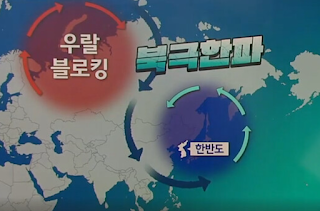The Arctic's Cry for Help: Unveiling the Consequences of a Disrupted Jet Stream
As a snow cloud edges southeast, South Korea braces for plummeting temperatures and one of the coldest wind chills witnessed this winter. This unwelcome cold snap, a consequence of a disrupted jet stream, is a stark reminder of the far-reaching impacts of climate change.
The disrupted jet stream, attributed to the melting of Arctic sea ice, allows Arctic cold air to plunge southward, affecting regions like the Korean Peninsula. The intricate dance of clockwise and counterclockwise air flows near the Ural Mountains underscores the interconnectedness of global weather patterns.
In examining Arctic climate data, the last seven years reveal alarming trends—hottest temperatures, above-average snowmelt, increased precipitation, and unprecedented melting of the Greenland ice sheet. These indicators highlight the severity of climate change in the Arctic, signaling broader ramifications for the planet.
The most alarming consequence is the surge in extreme weather events worldwide, driven by the weakened jet stream. From floods to heatwaves, the global community bears witness to the destructive power of climate change. As Arctic glaciers dwindle, their inability to reflect solar radiation accelerates global warming, posing threats to ecosystems and releasing methane from melting permafrost.
A report sounds a clarion call, urging immediate action for carbon neutrality. Even with drastic emissions reductions, glaciers will continue melting, raising sea levels and jeopardizing coastal cities. The disappearance of summer Arctic sea ice by 2050 looms large, intensifying winds and waves, impacting millions of people.
The Intergovernmental Panel on Climate Change (IPCC) underscores the urgency, projecting a 1.5-degree Celsius temperature rise to result in the loss of summer sea ice, threatening low-lying countries. Carbon neutrality emerges as the critical shield against Arctic glacier melting, demanding collective efforts to avert an impending environmental crisis.
Frequently Asked Questions (FAQ):
Q1: How does the disrupted jet stream contribute to the cold snap in South Korea? A1: The disrupted jet stream, linked to melting Arctic sea ice, allows Arctic cold air to descend on the Korean Peninsula, causing the cold snap.
Q2: What trends in Arctic climate data indicate severe climate change? A2: The last seven years show the hottest temperatures, above-average snowmelt, increased precipitation, and unprecedented melting of the Greenland ice sheet, signaling severe climate change.
Q3: Why is carbon neutrality crucial in the face of Arctic glacier melting? A3: Carbon neutrality is essential to prevent the ongoing melting of glaciers, which threatens coastal cities, raises sea levels, and intensifies extreme weather events globally.
Q4: What consequences are projected by the IPCC in its sixth report? A4: The IPCC projects that a 1.5-degree Celsius temperature rise could lead to the loss of summer sea ice, resulting in rising sea levels and posing an existential threat to low-lying countries.
Q5: How does the disrupted jet stream impact global weather patterns? A5: The disrupted jet stream leads to extreme weather events globally, from floods to heatwaves, showcasing the interconnectedness of weather patterns.
#ArcticCrisis, #ClimateChangeImpact, #CarbonNeutralityNow, #GlobalWeatherPatterns, #MeltingGlaciers

